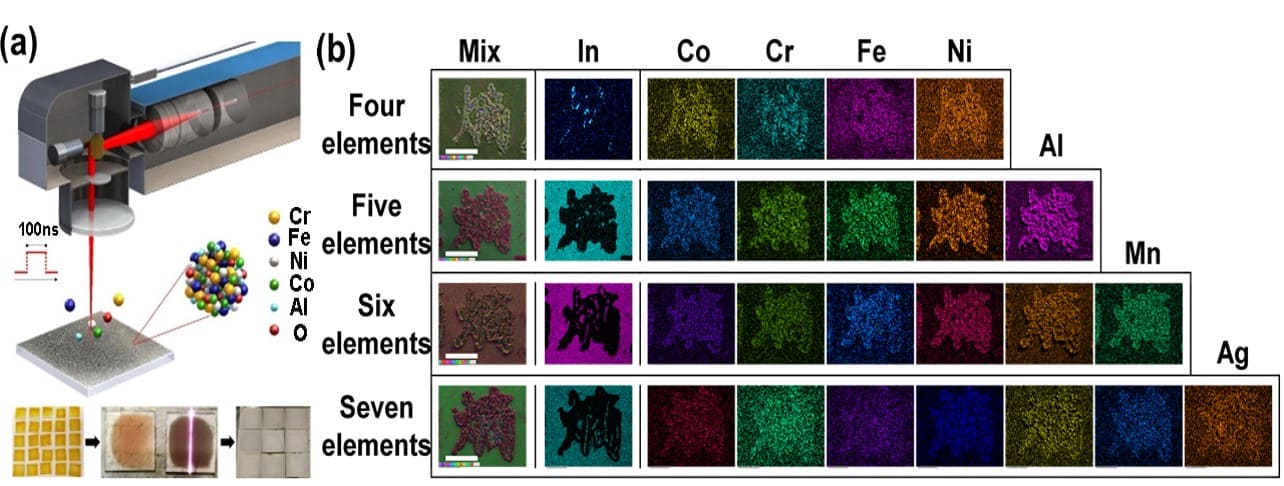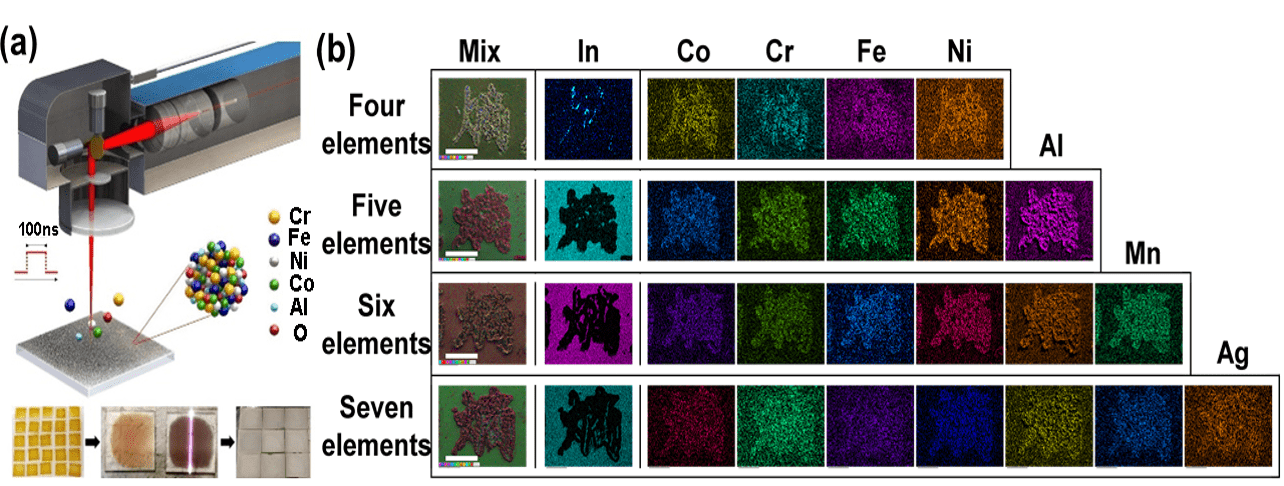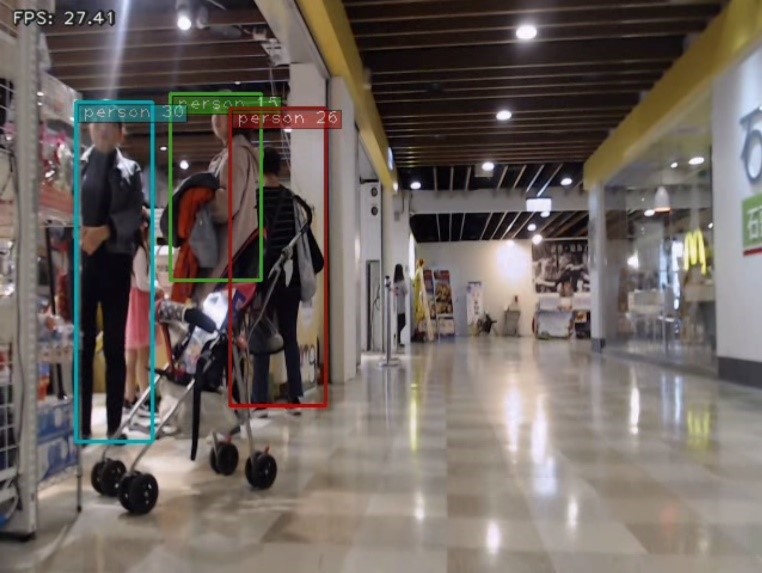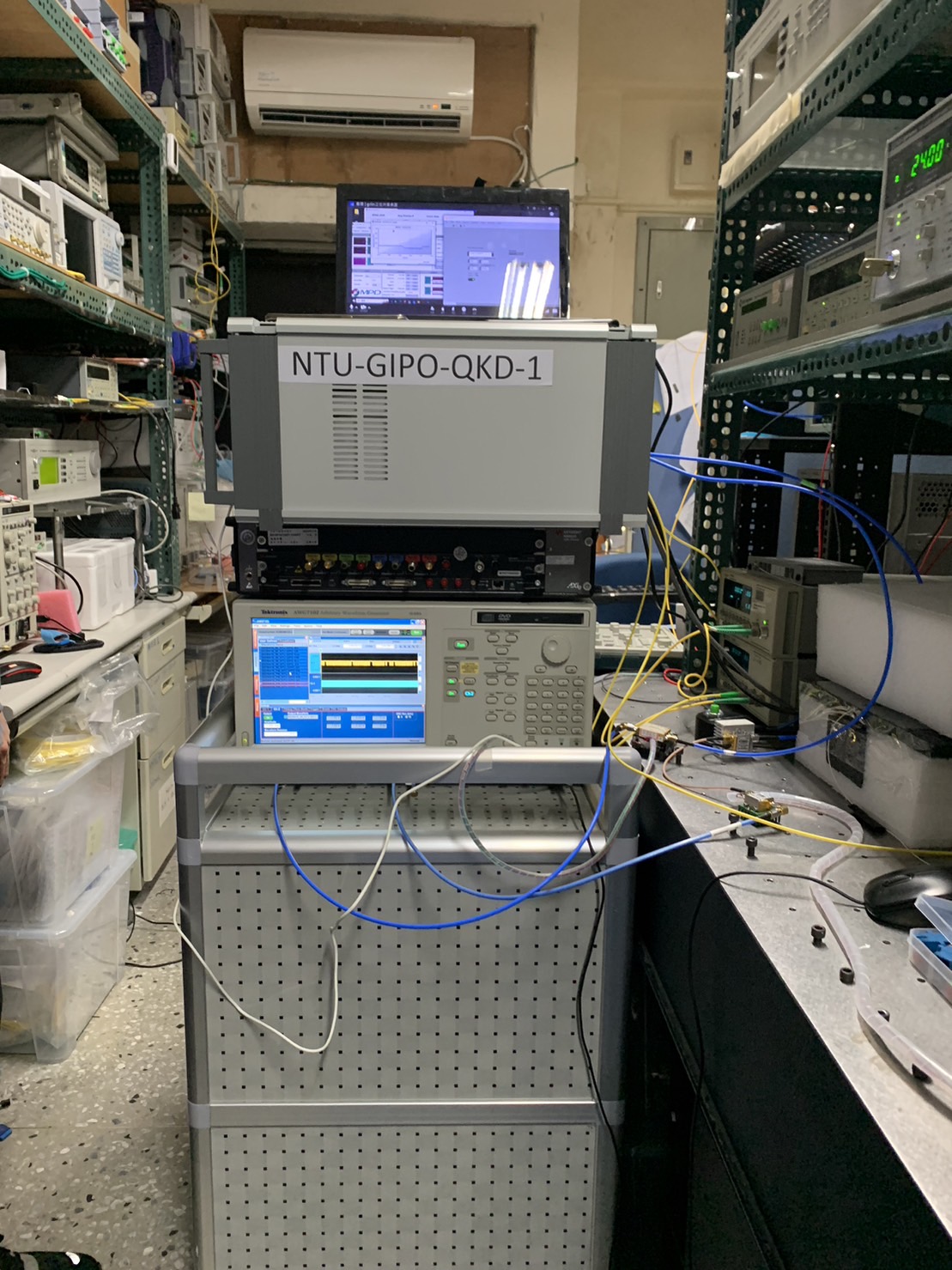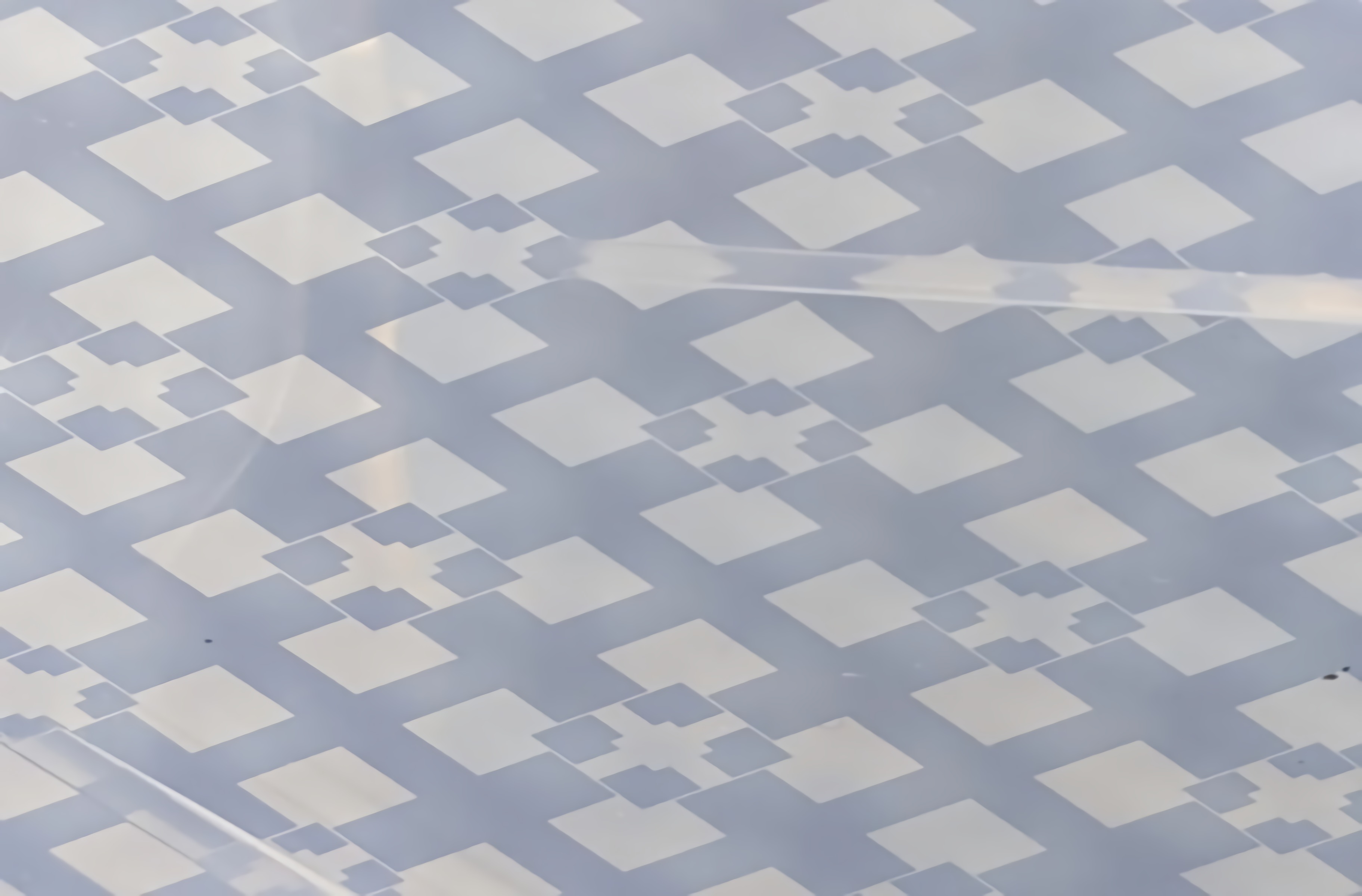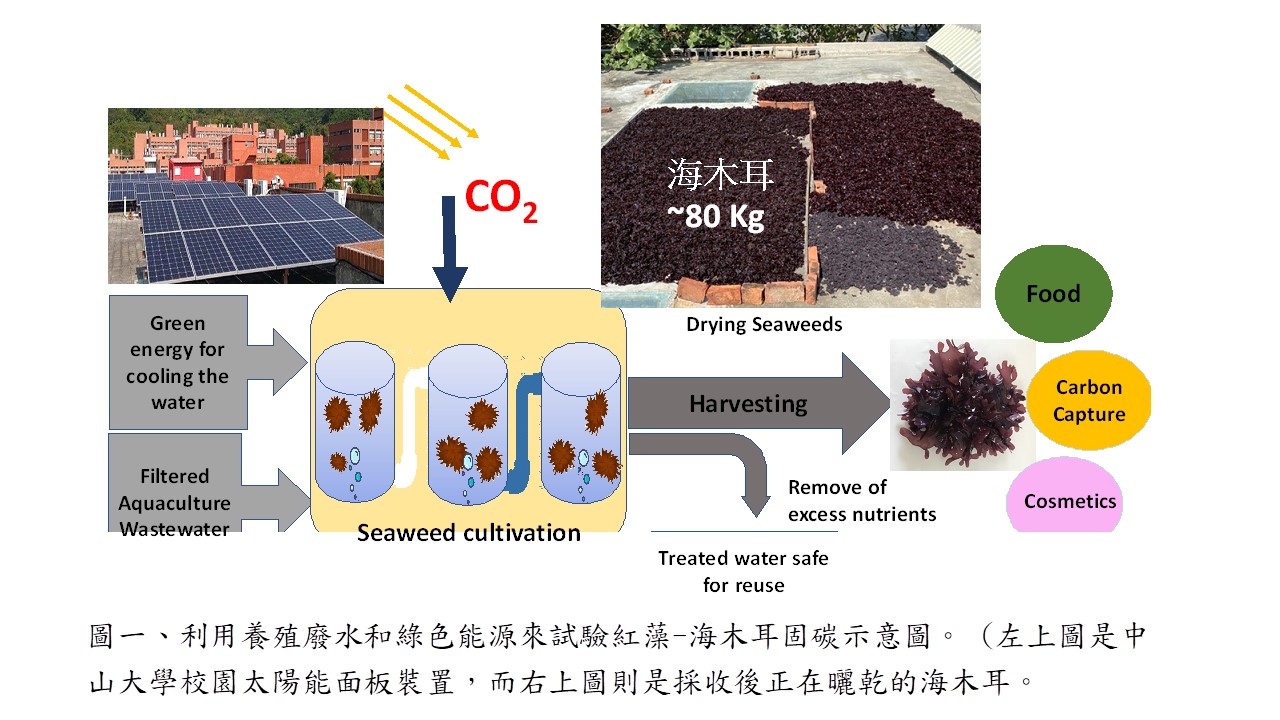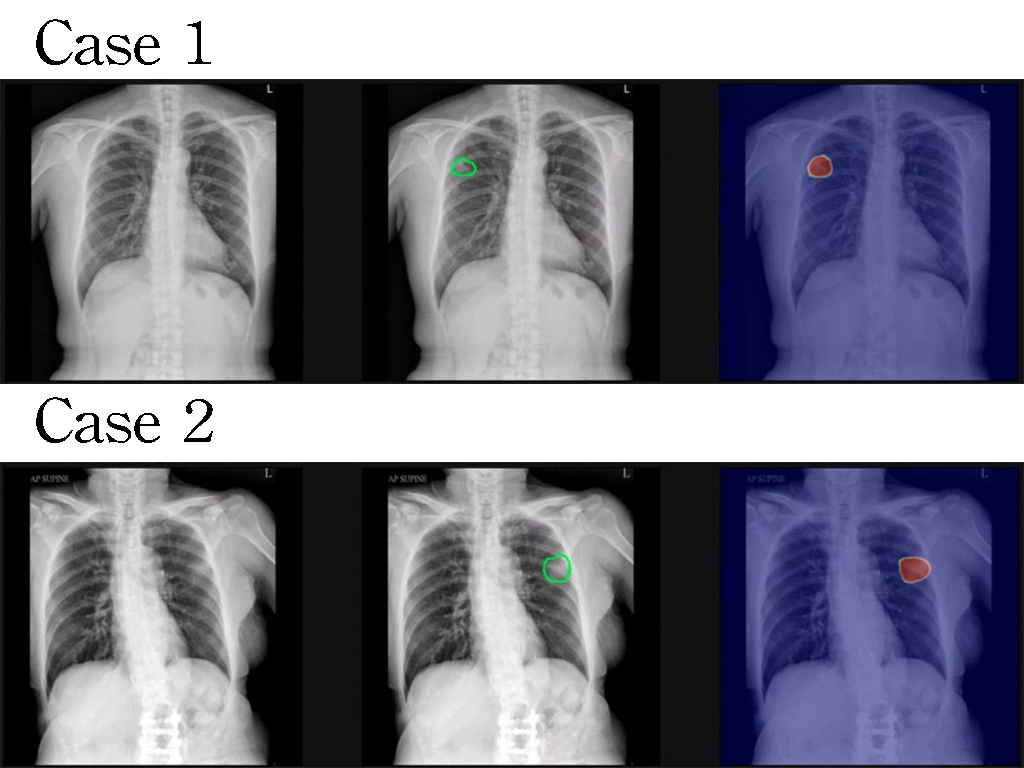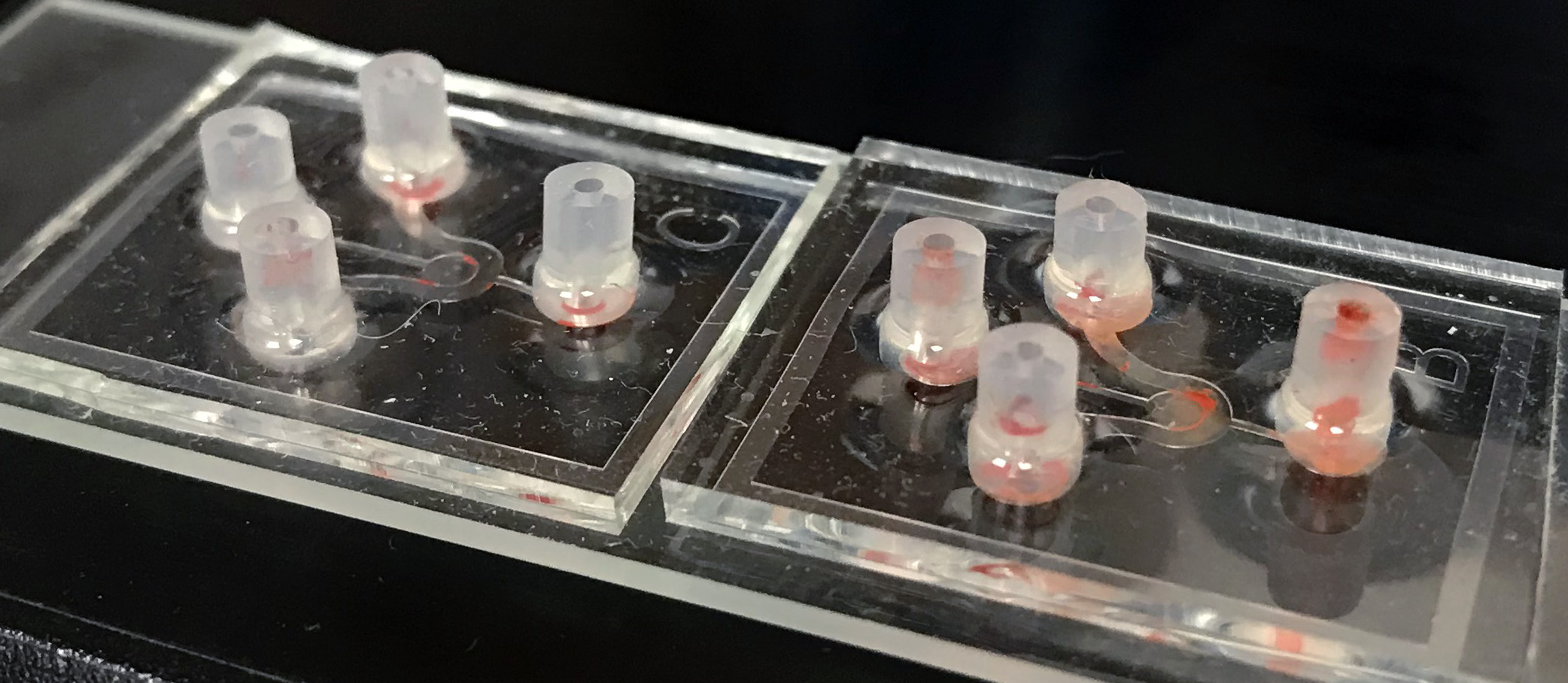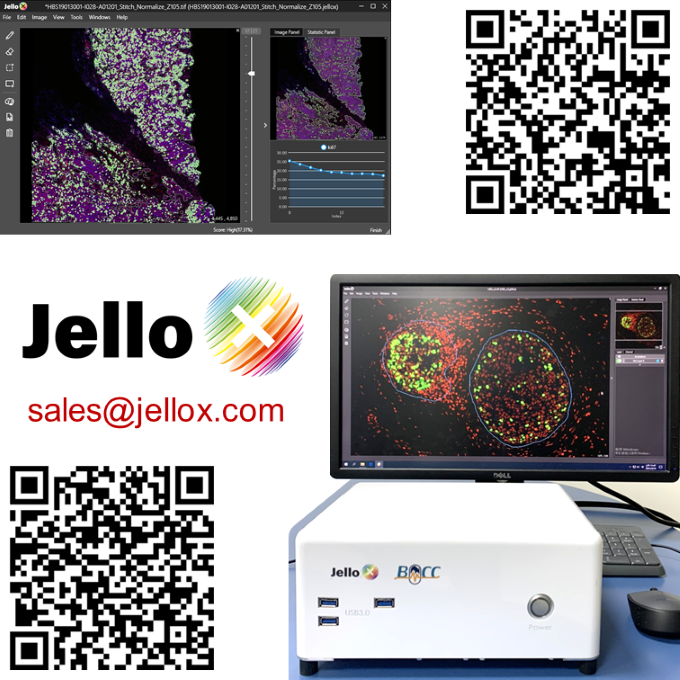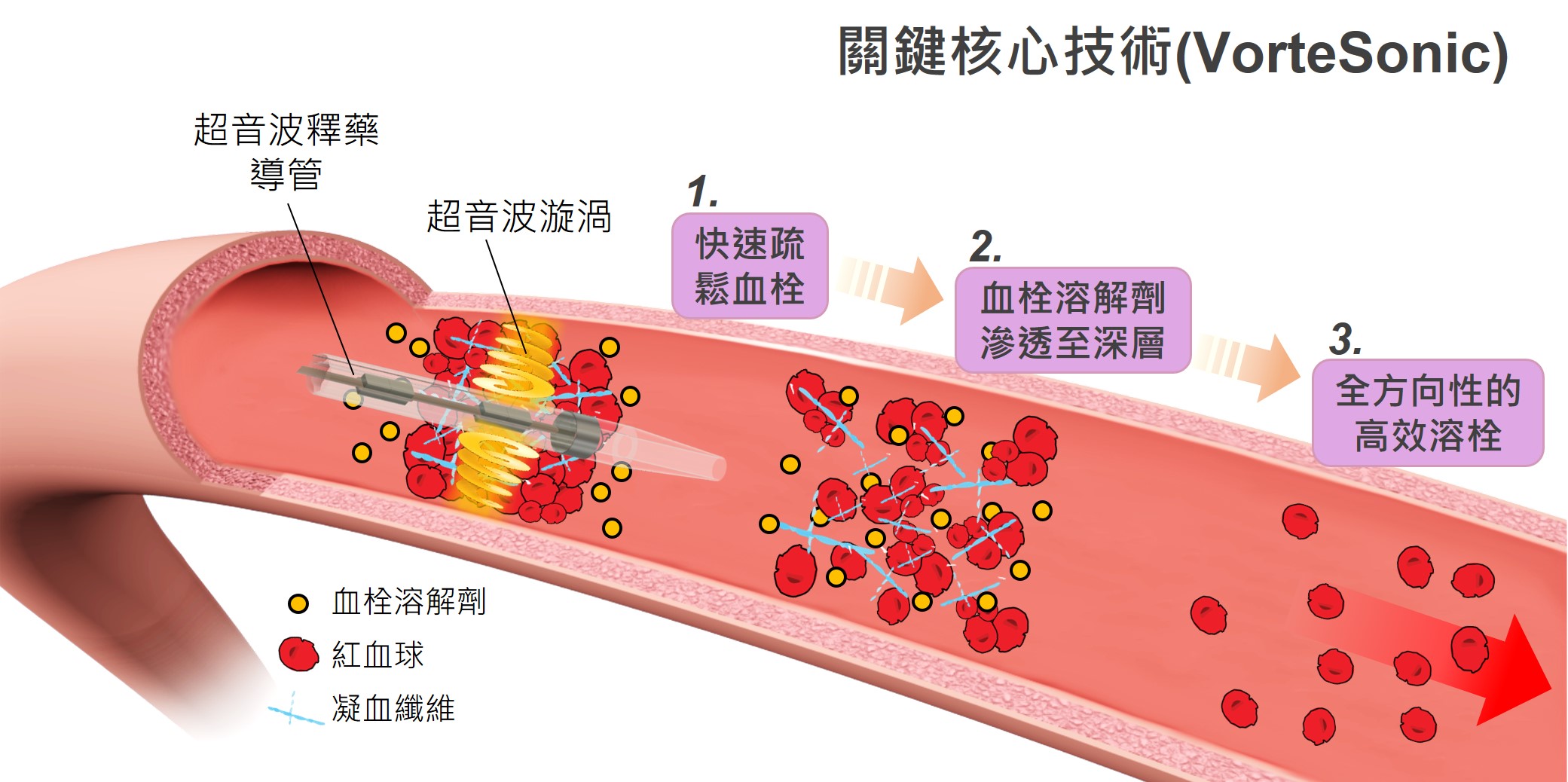| Summary |
A unique technology developed in our laboratory—pulsed laser irradiation scanning on mixed salt solutions (PLMS) to massively produce high-entropy nano-ceramics on various electrodes. We successfully demonstrate the electrocatalytic hydrogen evolutionoxygen production, working efficientlystably in a seawater-like environment. Again, this high-entropy ceramic electrode is an excellent electrode suitable for a seawater-like environment. Including a very low onset voltage is 1.467Vgreat stability under 100 (mA/cm2) current operation for 1000 hours, furthermore, 400(mA/cm2) higher current run for more than 250 hours, which shows a great potential for industry applicationlower the carbon emission via using hydrogen fuel. |
| Scientific Breakthrough |
Since the OER reaction rate is limited by four-electron coupling (4OH- ↔ 2H2O + O2 + 4e- ), proton transferO-O bond formation. So far, the most active catalysts for OER reactions on the market are Pt alloysother noble metals such as Ir, RuPd alloystheir oxides. The cost are major barriers to the large-scale usage in renewable energy technologies. Therefore, this work chooses high entropy materials containing Co, Cr, Fe, Mn, Ni, etc. for OER oxygen evolution catalysis applications. The OERHER are successfully performed in the simulated seawater environmentreal seawater which show very low potential under the high current density outputvery long stability in the seawater operation. |
| Industrial Applicability |
In response to the international situationthe government's 2050 carbon neutralization strategy, a novelunique laser process(PLMS) was developeddesigned to produce high-entropy spinel-structured catalyst for the application of hydrogen evolutionoxygen production in seawater. The OERHER are successfully performed in the seawater environment with very low applied voltage, high current density outputvery long stability in the seawater operation. This technology will make a great impact on green energythe possibility of the goal of carbon neutralization. |





